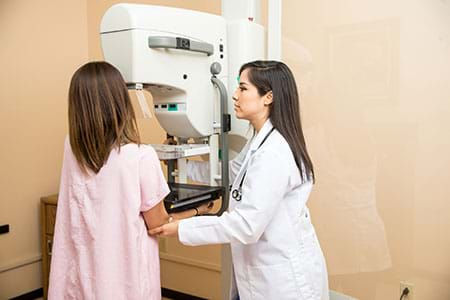Beyond the Basics: Emerging Trends in Oncological Screening in Dubai
- mishal jutt
- Nov 25, 2023
- 4 min read
Oncological screening, a foundation in the battle against disease, is encountering an extraordinary shift as arising patterns rethink the scene. Moving past the essentials of conventional screening strategies, these advancements offer new roads for early identification, accuracy, and availability. This article investigates the powerful domain of arising patterns in oncological screening, featuring their capability to reshape the eventual fate of disease care.
1. Fluid Biopsies: A Liquid Upheaval in Early Location
A change in outlook is in progress with the development of fluid biopsies as a progressive device in oncological screening in Dubai. This harmless methodology examines circling growth DNA (ctDNA) present in organic liquids, like blood. Fluid biopsies give constant data on hereditary modifications, empowering early location, observing therapy reaction, and offering a powerful perspective on the developing malignant growth scene.

The smoothness of fluid biopsies rises above the constraints of customary tissue biopsies, especially in malignant growths where getting tissue tests is testing. This pattern holds the commitment of changing early identification by making screening more open, helpful, and equipped for catching the complexities of disease at a sub-atomic level.
2. Hereditary Screening: Making ready for Customized Anticipation
Progressions in hereditary screening are preparing for customized avoidance procedures. Past recognizing inherited inclinations, hereditary screening presently incorporates a more extensive comprehension of a person's hereditary cosmetics, directing customized screening plans. The incorporation of hereditary data into oncological screening recognizes high-risk people as well as engages them with information to come to informed conclusions about preventive measures.
This pattern denotes a shift towards accuracy medication in disease counteraction, where screening methodologies are right on time as well as are unpredictably custom-made to a singular's novel hereditary gamble profile. As hereditary screening turns out to be more available, it opens ways to proactive mediations and the possibility to additionally individualize malignant growth counteraction endeavors.
3. Man-made consciousness (simulated intelligence) and AI: The Force of Information Examination
The combination of man-made reasoning (artificial intelligence) and AI (ML) into oncological screening is opening new aspects in information examination. These advances examine huge datasets, distinguish examples, and help medical services experts in deciphering screening results. The use of man-made intelligence and ML in disease screening upgrades exactness, productivity, and the capacity to reveal unpretentious examples that might get away from customary examination.
This arising pattern goes past static picture examination, reaching out into prescient demonstrating, risk separation, and choice help. By outfitting the force of man-made intelligence, oncological screening becomes more exact as well as more versatile and equipped for developing with the consistently growing information base in disease research.
4. Multi-Disease Screening: An Extensive Methodology
Arising patterns in oncological screening are directing towards a more extensive methodology by tending to various malignant growth types all the while. Generally, screening endeavors have been infection explicit, zeroing in on individual malignant growths. Be that as it may, the ascent of multi-malignant growth screening expects to project a more extensive net, recognizing a range of diseases in a solitary test.
This pattern holds enormous potential for early discovery across assorted disease types, particularly in situations where side effects might cover or when people have uplifted takes a chance for various malignant growths. Multi-disease screening is not too far off of changing malignant growth care by offering a more comprehensive way to deal with early determination.
5. Openness and Telemedicine: Arriving at Underserved Populaces
Guaranteeing boundless admittance to oncological screening is an essential part of arising patterns. Telemedicine, with its quick development, is turning into a useful asset in making screening more open, especially for underserved populaces. Distant conferences, virtual screenings, and the reconciliation of telemedicine into screening programs are separating geological hindrances and contacting people who might confront difficulties getting to customary medical care offices.
This pattern improves the range of screening programs as well as adds to the democratization of disease care, guaranteeing that progressions in early location benefit different networks around the world.
Difficulties and Contemplations in Execution
While these arising patterns hold monstrous commitment, challenges should be addressed to understand their potential completely. Guaranteeing fair admittance to early showing advances, tending to information security concerns, and exploring the moral scene of hereditary data are basic contemplations. Moreover, cultivating mindfulness and training about these developments is fundamental to defeating hindrances and guaranteeing their combination into routine clinical practice.
Determination: A Fate of Proactive and Exact Disease Care
All in all, past the essentials of oncological screening, arising patterns are forming a future set apart by proactive, exact, and open malignant growth care. Fluid biopsies, hereditary screening, man-made intelligence, multi-disease draws near, and telemedicine are all in all reshaping the scene of early malignant growth location.
As these patterns advance, the possibility of recognizing malignant growth prior, fitting counteraction systems to individual hereditary qualities, tackling the force of information examination, and coming to underserved populaces turns out to be progressively substantial.
The excursion past the rudiments of oncological screening isn't just about recognizing disease; it is tied in with changing the story of malignant growth care into one where counteraction is customized, early, and comprehensive, offering expect a future where the effect of disease is relieved through creative and proactive screening systems.
Read More:



Comments